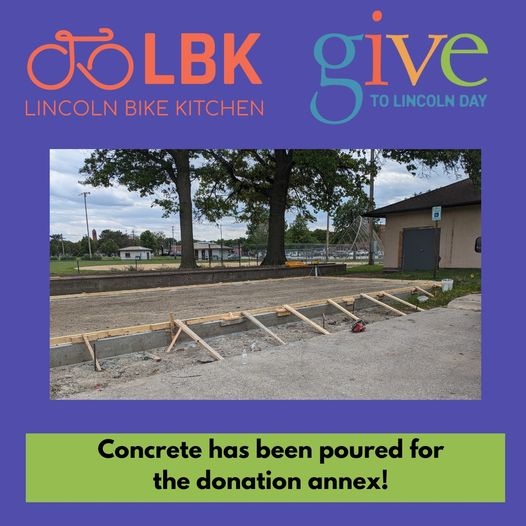This Saturday June 15th 9-12 is the Lincoln Bike Kitchen‘s Annual Bike Sale at 1635 S. 1st Street.
“25 of the highest quality bikes we’ve seen during the past year will be for sale. They will be priced below market value, between $150-$900.
Bike brands from Gary Fisher, Klein, Giant, Diamond Back, Cannondale, Trek, Jamis, and others. All tuned up, lubricated, and in excellent condition.
This once-a-year sale helps support our mission of providing free bikes for underprivileged kids and needy adults throughout the year. Cash, check, or credit card accepted.
We’ll also be selling a variety of racks, bags and more for very low prices.”
Help LBK raise funds for the move to their new location in the old Muny Pool Building in the Telegraph District along the Billy Wolfe Trail.

Having a bike is an important part towards the goal of being a happy cyclist. Another part is having safe routes to ride and, finally, knowing how to ride. I’ve happened upon a couple of news articles from CityLab this week that bring up some interesting observations about what makes the difference between the “interested but concerned” potential rider and the regular bicycle rider. Though the first story focuses mainly on London, the same problems and potential solutions are present here in Lincoln and the rest of the U.S. :
“The Other Kind of Bike Infrastructure Cities Need: Bicycle skills training and education programs aimed at women and minority groups can help close cycling’s stubborn access gaps and get more riders in the saddle“. The Author found skills building and basic maintenance classes gave her the confidence to use the infrastructure of her city.

For a little history of how cycling became safer in Europe over the last 50 years, read about the changes made, and what it takes for women to feel safer and more accepted as riders. You might think that it’s always been safer to ride there but that’s not the case. From the article: “Historically, the places where a cycling gender gap persists are also places lacking in bike infrastructure. Without bicycle lanes, barriers, greenways, and the like, cyclists may be forced into risky situations alongside motorists. Too often, this leads to fatal accidents. A University of Minnesota study suggests the risks are even higher for women: drivers are more likely to dangerously invade a woman cyclist’s space….The cycling gender gap doesn’t have to exist. In Denmark, women make up 53% of all cyclists. In Germany, 49% of bike trips are made by women. The Netherlands has an even higher share at 55%.”
To illustrate the ups and downs and the importance of winning the hearts and minds of the non-cycling public, I include this article. It is a cautionary tale about what can happen if we don’t stay focused and engaged. Lincoln is pretty good with policy, mainly it seems to be funding that lags here. The removal of bike lanes happens when those making decisions are not on-board with our vision of safe and complete streets. Now about that safety stop…
